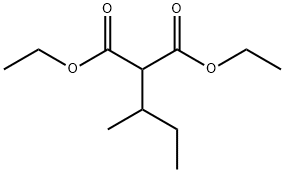A3945012
Ethyl hexanoate , 99% , 123-66-0
Synonym(s):
Caproic acid ethyl ester;Ethyl caproate
CAS NO.:123-66-0
Empirical Formula: C8H16O2
Molecular Weight: 144.21
MDL number: MFCD00009511
EINECS: 204-640-3
Update time: 2022-07-08
PRODUCT Properties
| Melting point: | -67°C |
| Boiling point: | 168 °C (lit.) |
| Density | 0.869 g/mL at 25 °C (lit.) |
| vapor density | 5 (vs air) |
| vapor pressure | 4hPa at 25℃ |
| FEMA | 2439 | ETHYL HEXANOATE |
| refractive index | n |
| Flash point: | 121 °F |
| storage temp. | Flammables area |
| solubility | 0.63g/l |
| form | Liquid |
| color | Clear colorless |
| Odor | at 1.00 % in dipropylene glycol. sweet fruity pineapple waxy green banana |
| Odor Type | fruity |
| biological source | synthetic |
| explosive limit | 0.9%(V) |
| Water Solubility | INSOLUBLE |
| Merck | 14,3777 |
| JECFA Number | 31 |
| BRN | 1701293 |
| Dielectric constant | 4.5700000000000003 |
| InChIKey | SHZIWNPUGXLXDT-UHFFFAOYSA-N |
| LogP | 2.96 at 22.4℃ |
| CAS DataBase Reference | 123-66-0(CAS DataBase Reference) |
| NIST Chemistry Reference | Hexanoic acid, ethyl ester(123-66-0) |
| EPA Substance Registry System | Ethyl hexanoate (123-66-0) |
Description and Uses
Ethyl Caproate is used in the synthesis of novel EP2/EP4 dual agonist of γ-lactam prostaglandin E1 analogs. Also used as a chemical reagent in the synthesis of PPARα antagonists in the treatment of metabolic diseases.
Safety
| Symbol(GHS) |  GHS02 |
| Signal word | Warning |
| Hazard statements | H226 |
| Precautionary statements | P210-P370+P378 |
| Hazard Codes | Xi |
| Risk Statements | 10-36/37/38-R36/37/38-R10 |
| Safety Statements | 16-26-36-S36-S26-S16 |
| RIDADR | UN 3272 3/PG 3 |
| WGK Germany | 1 |
| RTECS | MO7735000 |
| TSCA | Yes |
| HazardClass | 3 |
| PackingGroup | III |
| HS Code | 29159000 |
| Toxicity | Both the acute oral LD50 value in rats and the acute dermal LD50 value in rabbits exceeded 5 g/kg (Moreno, 1975). |




